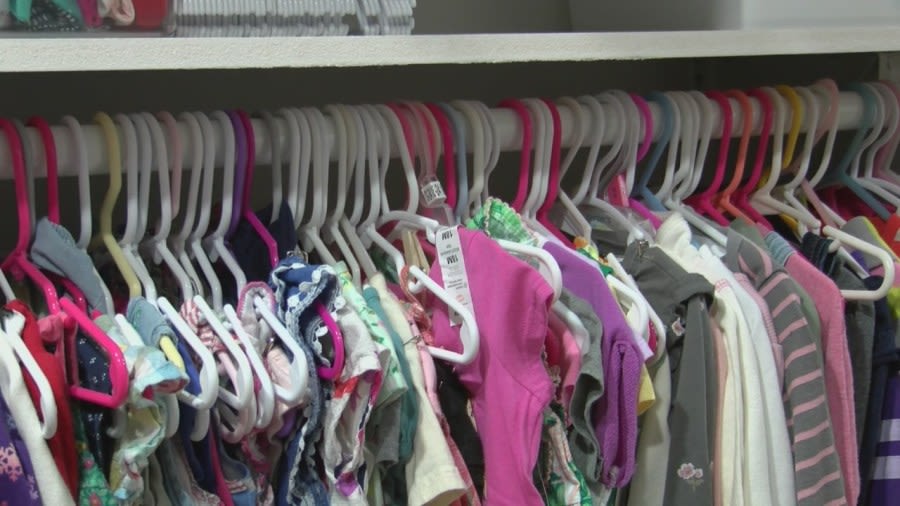Search results
- One out of every 25 U.S. families with children have an adopted child. According to the U.S. Census, about half of these have both biological and adopted children. Roughly 40% of adoptions are from the U.S. foster care system. According to the Child Welfare Information Gateway, intercountry adoptions comprise about 14%.
www.goodhousekeeping.com › life › parenting
News about Michigan, child welfare system, foster parents
News about foster care, Texas, adoption
Also in the news
People also ask
Who adopts a child from foster care?
Are children adopted from foster care doing well?
How old is a child adopted from foster care?
How many children are in foster care?
21 hours ago · The Free Press spoke with about a dozen parents who had adopted children out of the child welfare system over the last 15 years. ... But Amanda Zimmerman said foster care workers encouraged her to ...
Find information for child welfare and adoption professionals to help youth in foster care explore permanency options and the value of secure, permanent connections based on interviews with young people who were adopted or aged out of foster care.
More than 48,000 youth in U.S. foster care live in institutions, group homes, and other environments, instead of with a family. Of the 53,500 children and youth who were adopted in 2021: 55% were adopted by their foster parent (s) and 34% by a relative.
- Contents
- Introduction
- Characteristics of Adopted Children, Parents, and Households
- Motivations For Choosing Foster Care Adoption, and Importance of Various Reasons
- Satisfaction and Well-Being
- Summary and Conclusions
- References
- Endnotes
This research brief is the first of a two-part analysis that presents information on children adopted from foster care in the United States and their families using data from the 2007 National Survey of Adoptive Parents (NSAP) and the 2007 National Survey of Childrens Health (NSCH). This brief describes the characteristics of children adopted from ...
Children Adopted from Foster Care
Table 1 (page 4) presents information from the NSAP on the characteristics of children adopted from U.S. foster care. Overall, males represent 57 percent of the children adopted from foster care. Of all children adopted from foster care, 40 percent began living with their adoptive families at nine years of age or younger. AFCARS yields data on more recent adoptions that occurred in 2008; they indicate an equal gender distribution of children adopted from public foster care. Data on recent ado...
Households of Children Adopted from Foster Care
D Table 3 (page 10) presents data on characteristics of the households of children adopted from foster care. NSAP captured information on the presence of birth and adoptive children in the household, whether the adoption was transracial, transethnic, or transcultural, and whether there was post-adoption contact with birth family members. The NSCH collected information on the region of the country in which the adoptive family resides and whether the area is a metropolitan statistical area (tha...
What motivates families to adopt is an important question for the child welfare field, yet to date, little is known due to the lack of nationally representative data on adoptive families and the limited research in general on the topic. NSAP data can help to inform this issue. Parents who had adopted from foster care responded to two sets of questi...
In this section we present indicators related to parenting and adoption satisfaction. We describe how parents feel about the parent-child relationship, the childs effect on the family, and the satisfaction of children and parents with the adoption. In general, three-quarters of all children adopted from foster care have a relationship their parent ...
Demographic and other characteristics of children adopted from foster care differ from those of children in the general U.S. population. For example, boys, non-Hispanic black children, and children with special health care needs are all over-represented among children adopted from foster care. Racial disparities have been observed in the child welf...
Hill, Robert B. (2006). Synthesis of Research on Disproportionality in Child Welfare: An Update. Seattle, Washington: Casey Family Programs. Howe, D., and Fearnley, S. (2003). Disorders of attachment in adopted and fostered children: Recognition and treatment. Clinical Child Psychology and Psychiatry, 8(3): 369-387 Hughes, D.A. (1999). Adopting chi...
All analyses pertaining to race and Hispanic origin examined mutually exclusive groupings. In other words, the racial categories white, black, Asian, and other exclude individuals who are non-Hispanic. Those identified as Hispanic may be of any race. Differences described in the brief are statistically significant at the 95 percent level or better;...
1. In the first four years after aging out of foster care, approximately 20% of former foster youth will experience homelessness. 2. Nationally, approximately 29% of youth without housing between the ages of 13 and 25 have spent time in foster care. 3.
Thousands of children in foster care need permanent families. Adopting a child from foster care is a great way to help a child while growing your family. Today there are more than 117,000 children and teens in foster care who are waiting for the love and security that a permanent home provides. You can learn more about foster care and adoption ...


